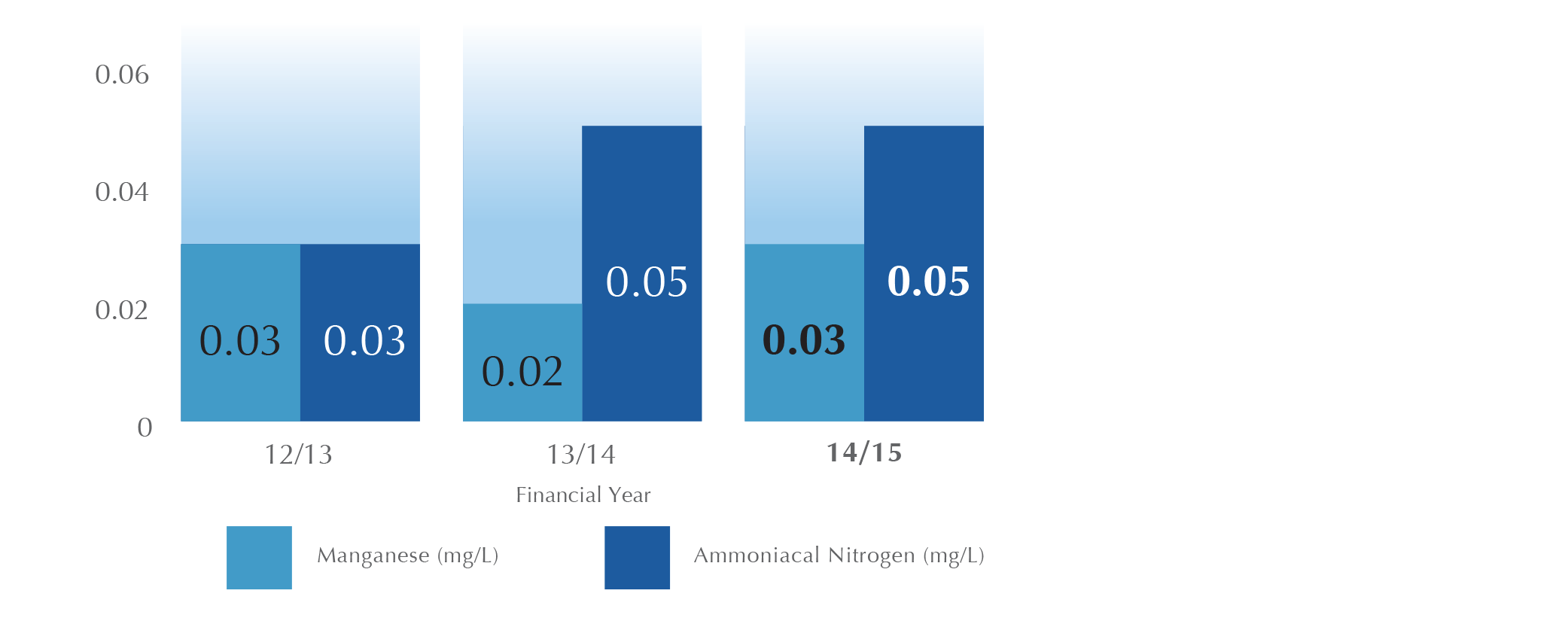Securing Longer Term Water Supply
Currently, Hong Kong has a 3-pronged water supply system, comprising rainwater from local catchments, imported water from Dongjiang in Guangdong and seawater for toilet flushing. Their contributions to the total water consumption of 1,230 million
cubic meters in 2014 were 19%, 59% and 22% respectively. With these three water sources, Hong Kong has been enjoying reliable water supply over the years.
Nevertheless, to better prepare Hong Kong for the challenges of climate change and the increasing demand for fresh water due to rapid population and economic growth, and competition for water resources in the Pearl River Delta region, we have been striving to contain water demand growth through water conservation and to exploit alternative water resources which are less susceptible to climate change, including seawater desalination and water reclamation. With the implementation of these measures, we are moving towards the establishment of a 6-pronged water supply structure consisting of the existing three sources – local yield, imported Dongjiang water and seawater for flushing, supplemented by three new sources – desalinated water, reclaimed water and recycled grey water and rainwater harvesting. These six water supply sources will be the pillars supporting Hong Kong with enhanced water security and resilience into the future.
Nevertheless, to better prepare Hong Kong for the challenges of climate change and the increasing demand for fresh water due to rapid population and economic growth, and competition for water resources in the Pearl River Delta region, we have been striving to contain water demand growth through water conservation and to exploit alternative water resources which are less susceptible to climate change, including seawater desalination and water reclamation. With the implementation of these measures, we are moving towards the establishment of a 6-pronged water supply structure consisting of the existing three sources – local yield, imported Dongjiang water and seawater for flushing, supplemented by three new sources – desalinated water, reclaimed water and recycled grey water and rainwater harvesting. These six water supply sources will be the pillars supporting Hong Kong with enhanced water security and resilience into the future.
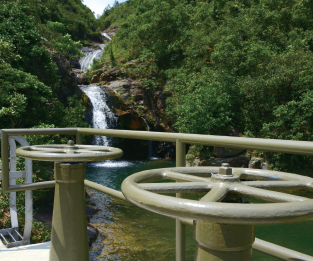
Local Yield
All across Hong Kong, covering nearly 30% of the Territory, are rainfall catchment areas with 17 impounding reservoirs. In general, rainwater is largely uncontaminated. However, as additional measures for safety, the Department makes regular inspections,
checks water quality, carries out necessary maintenance and removes debris in the catchwaters. Local yield generally accounts for about 20 to 30% of our total fresh water consumption.
Expansion of Salt Water Flushing Application
In addition to potable water sources, we also place great importance on the application of sea water for toilet flushing. In 2015, we commissioned the salt water supply system for the Northwest New Territories to provide seawater for flushing in the Tuen
Mun Town East, Yuen Long and Tin Shui Wai areas. This marks an expansion of Hong Kong’s seawater supply coverage to 85% of the population.
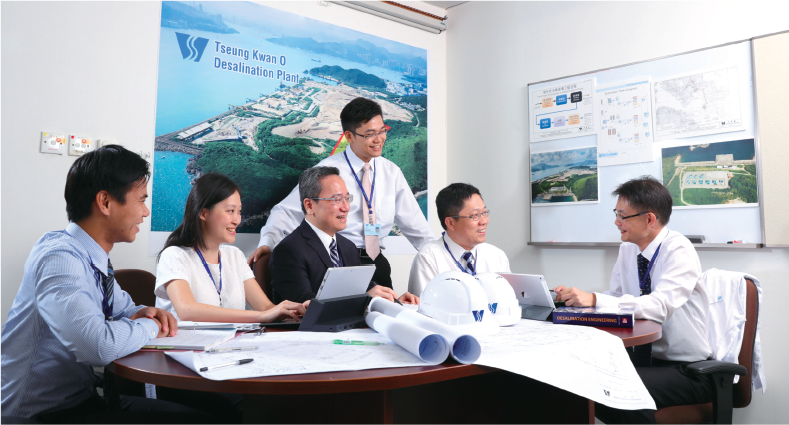
Seawater Desalination
The Department is always concerned about issues surrounding water supply management, and we actively explore all viable options for obtaining new water resources that will better mitigate the unknown consequences of climate change. With proven desalination
technology using reverse osmosis, which can produce potable water that complies with WHO Guidelines for Drinking-water Quality, we consider seawater as a reliable drinking water source for Hong Kong.
With this in mind, we commissioned a planning and investigation study for a desalination plant at Tseung Kwan O Area 137 in December 2012, which was largely completed at the end of March 2015. To maintain the reliability of water supply in extreme weather, the proposed desalination plant will have an initial capacity of 135,000 cubic metres per day, which is about five per cent of the fresh water consumption in Hong Kong. Provisions will be made for future expansion, allowing ultimate water production capacity to reach 270,000 cubic metres per day when necessary. The study has confirmed the overall technical feasibility including the environmental viability of the project. A preliminary design of the plant has been formulated with due emphasis on an optimal whole life cycle cost. The estimated unit water production cost of the proposed desalination plant is about $12 to $13 per cubic metre (at 2013 price levels) which is comparable with the range of overseas unit costs to produce fresh water by seawater desalination using reverse osmosis technology. We aim to commence the construction of the first stage of the plant with an output capacity of 135,000 cubic metres per day early in 2017 or 2018.
With this in mind, we commissioned a planning and investigation study for a desalination plant at Tseung Kwan O Area 137 in December 2012, which was largely completed at the end of March 2015. To maintain the reliability of water supply in extreme weather, the proposed desalination plant will have an initial capacity of 135,000 cubic metres per day, which is about five per cent of the fresh water consumption in Hong Kong. Provisions will be made for future expansion, allowing ultimate water production capacity to reach 270,000 cubic metres per day when necessary. The study has confirmed the overall technical feasibility including the environmental viability of the project. A preliminary design of the plant has been formulated with due emphasis on an optimal whole life cycle cost. The estimated unit water production cost of the proposed desalination plant is about $12 to $13 per cubic metre (at 2013 price levels) which is comparable with the range of overseas unit costs to produce fresh water by seawater desalination using reverse osmosis technology. We aim to commence the construction of the first stage of the plant with an output capacity of 135,000 cubic metres per day early in 2017 or 2018.
Water Reclamation
A study on the financial and legal aspects of reclaimed water supply is currently being undertaken by consultant. We have also started designing in phases the infrastructure and target to commence in 2022 the supply of reclaimed water converted from tertiary
treated sewage effluent at the Shek Wu Hui Sewage Treatment Works to Sheung Shui, Fanling and New Development Areas in Kwu Tung North and Fanling North for non-potable applications. The supply of reclaimed water will ultimately save Hong Kong about
21 million cubic metres of fresh water each year.

Grey Water Recycling and Rainwater Harvesting
Lower quality water collected from baths, showers, wash basins and kitchen sinks is known as grey water. Along with harvested rainwater, these supplies can be treated and reused for non-potable purposes such as toilet flushing and irrigation.
We have formulated detailed guidelines on the implementation of rainwater harvesting and grey water recycling systems so that new government buildings with the potential of reducing their fresh water demand for non-potable applications through rainwater harvesting or grey water recycling system will be able to install on-site treatment and recycling facilities as far as reasonably practicable. The guidelines have been incorporated in the joint Development Bureau and Environment Bureau Technical Circular in Green Government Buildings issued in April 2015. In collaboration with relevant departments, WSD is studying the feasibility of implementing a pilot scheme of centralised greywater recycling system in the Anderson Road Quarry development.
We have formulated detailed guidelines on the implementation of rainwater harvesting and grey water recycling systems so that new government buildings with the potential of reducing their fresh water demand for non-potable applications through rainwater harvesting or grey water recycling system will be able to install on-site treatment and recycling facilities as far as reasonably practicable. The guidelines have been incorporated in the joint Development Bureau and Environment Bureau Technical Circular in Green Government Buildings issued in April 2015. In collaboration with relevant departments, WSD is studying the feasibility of implementing a pilot scheme of centralised greywater recycling system in the Anderson Road Quarry development.

Water Supply Crisis Management
To ensure reliable and adequate water supply for Hong Kong, it is essential for the Department to prepare for any unforeseen problems in the water supply system. For this reason, we have a crisis management plan and several contingency plans drafted to
maintain a state of readiness for the rapid mobilisation of resources and coordination of emergency actions.
In addition, to cater for the possible impact of climate change on water resources, a Drought Contingency Plan (DCP) is in place as an adaptive measure to ensure water security to meet the basic needs of Hong Kong in the event of a severe drought. The DCP was formulated to guarantee our readiness to respond and allow us to efficiently mobilise resources in the event of severe drought either in Hong Kong or on the Mainland, which could affect the fresh water supply in Hong Kong.
In addition, to cater for the possible impact of climate change on water resources, a Drought Contingency Plan (DCP) is in place as an adaptive measure to ensure water security to meet the basic needs of Hong Kong in the event of a severe drought. The DCP was formulated to guarantee our readiness to respond and allow us to efficiently mobilise resources in the event of severe drought either in Hong Kong or on the Mainland, which could affect the fresh water supply in Hong Kong.
Water Quality and Health Standards
Guangdong authorities have taken effective steps to ensure that the quality of Dongjiang water that reaches Hong Kong meets all relevant national environmental quality standards. This has been achieved through a combination of measures and projects,
including the construction of new sewage treatment plants, removal of polluting factories and farms, commissioning of dedicated aqueducts, the Dongjiang Water Quantity and Quality Monitoring and Control System, and the on-going operations of the
bio-nitrification plant at the Shenzhen Reservoir. Moreover, we also maintain an on-line Water Quality Monitoring System that runs via an advanced SCADA system at the Muk Wu Pumping Stations to closely gauge the quality of imported Dongjiang water
around the clock. We continue to implement a Water Safety Plan to control and prevent any risks of contamination of drinking water from sources to distribution, and will diligently safeguard the quality of the drinking water supply in Hong Kong
for public health protection. The Department also continues to use the innovative Zebrafish method to detect abnormalities in the Dongjiang raw water supplied to Hong Kong. By closely monitoring the behaviour of the Zebrafish , the Department can
quickly spot any potential water quality problems and take appropriate countermeasures. To enhance water quality monitoring, the Department has also custom designed an olfactometer for use in conjunction with the simplified Flavour Profile Analysis,
which is an in-house developed technique for taste and odour assessment in water in order to rapidly detect abnormalities for implementation of effective control measures at water treatment works to ensure that the quality of drinking water is
acceptable to consumers. The Department also stays current concerning the latest developments and revisions to the Guidelines for Drinking-water Quality published by the World Health Organization (WHO) which is the standard that WSD has pledged
to comply with for the drinking water in Hong Kong. Currently, we are monitoring the quality of drinking water in Hong Kong in accordance with the latest WHO’s Guidelines published in 2011.
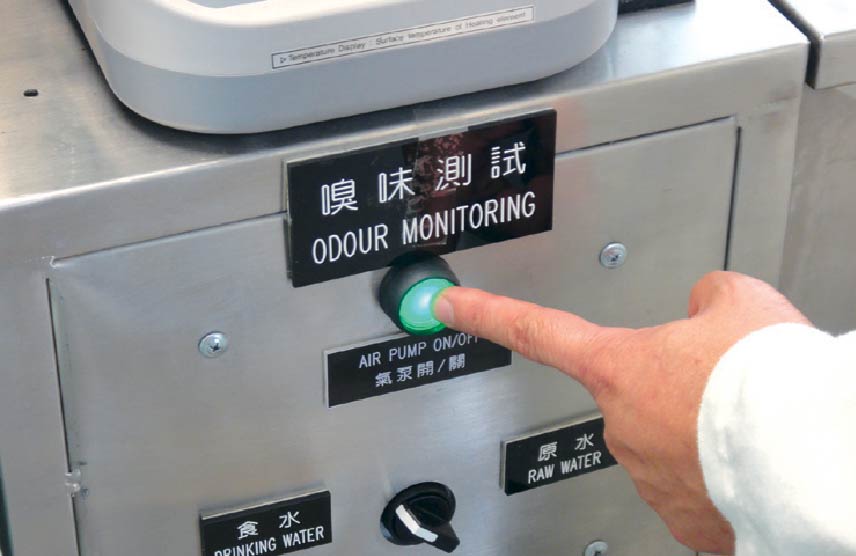
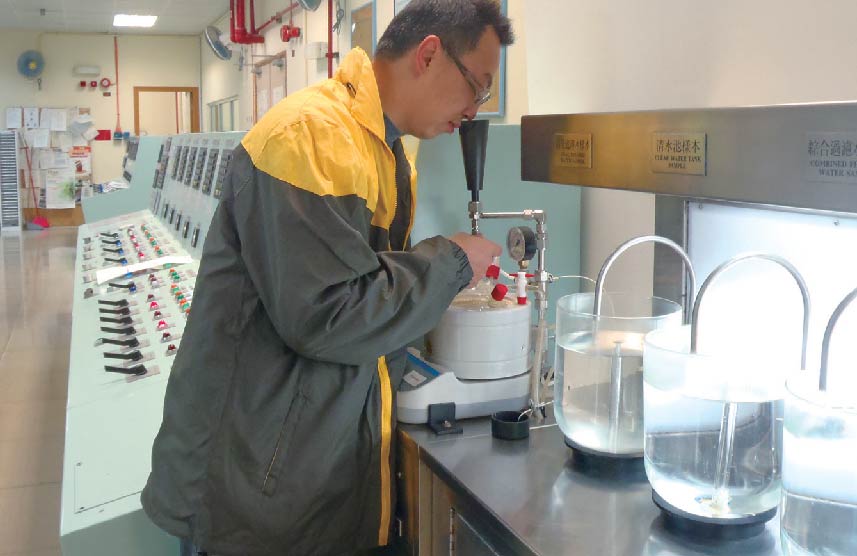
Olfactometer
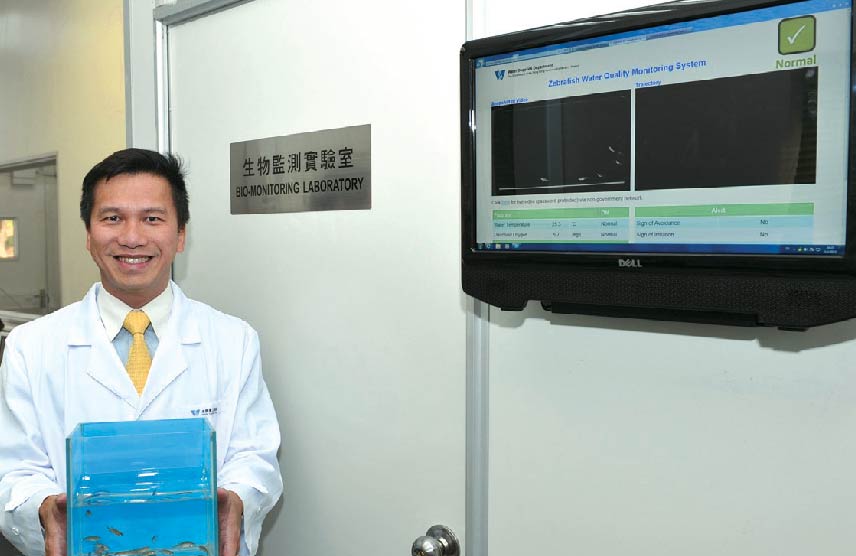
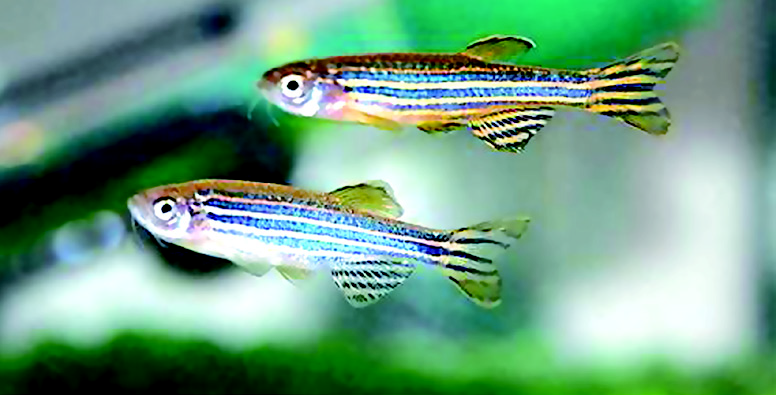
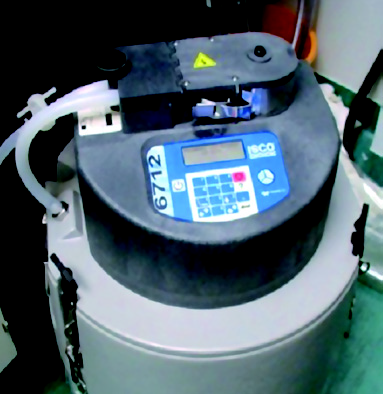
Zebrafish Method to Detect Abnormalities in Raw Water
Annual Quantity of Raw Water Supply 2010-2014
million cubic metres
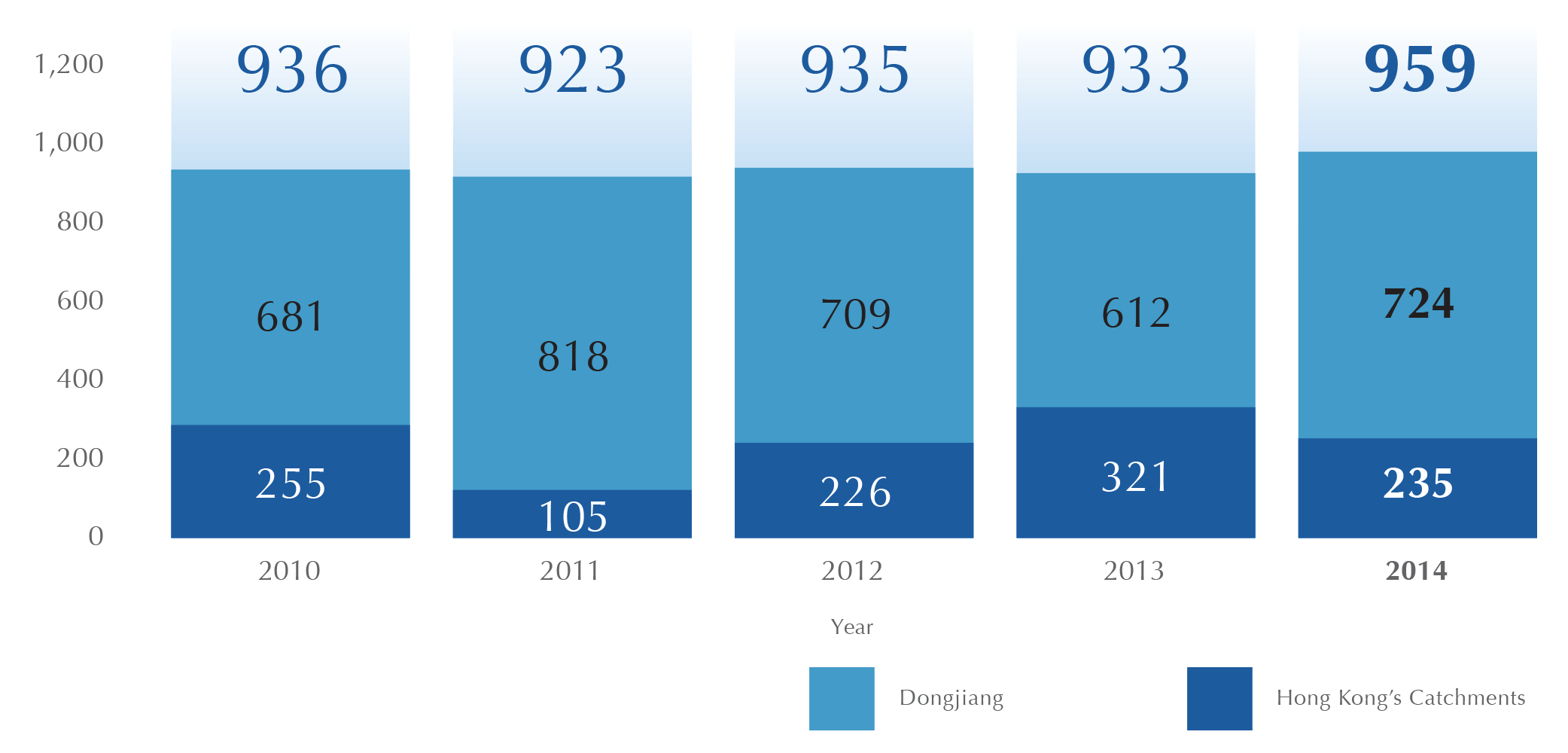
Total Average Daily Consumption (FW + SW)
2010-2014
2010-2014
million cubic metres
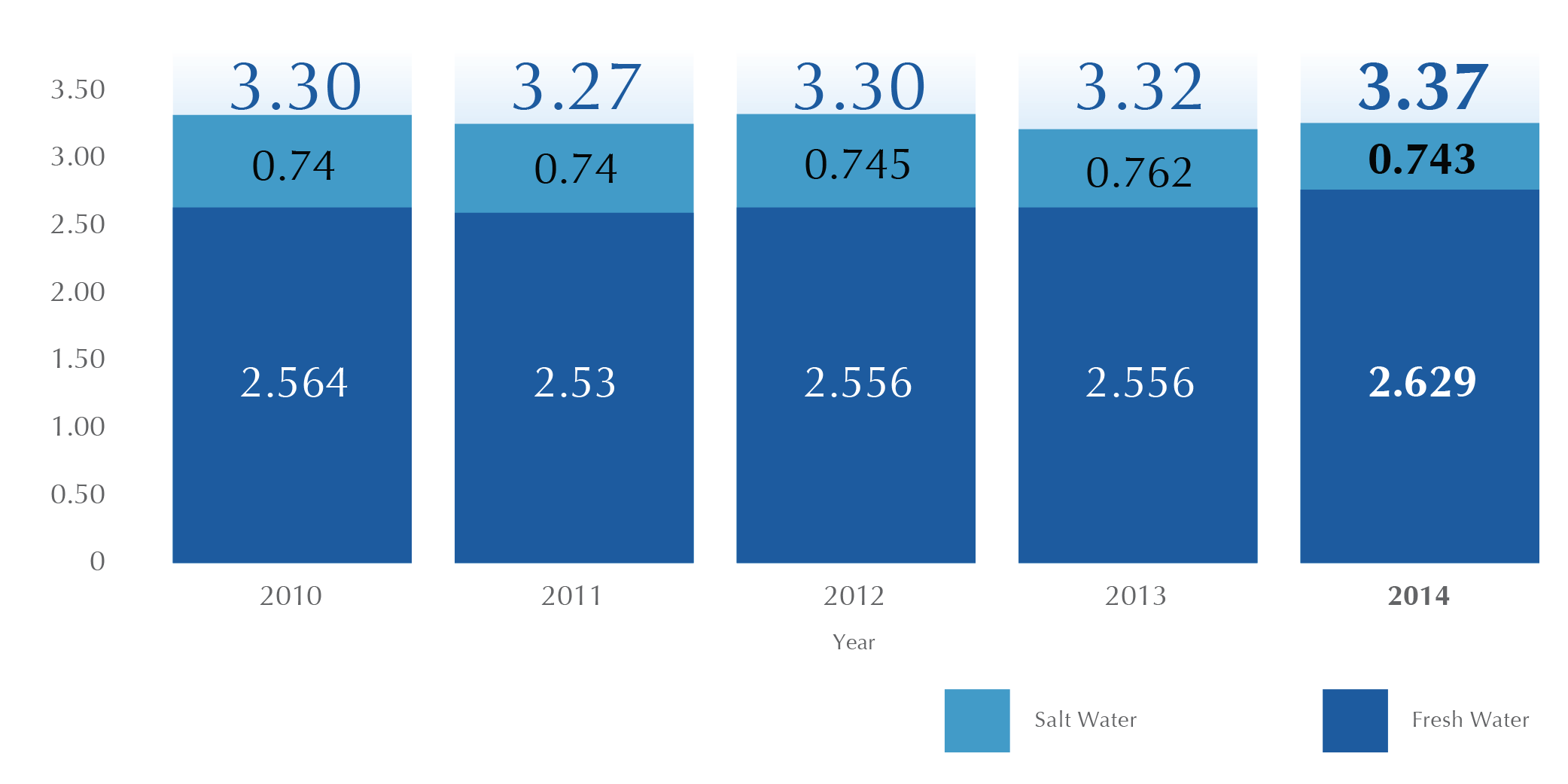
Annual Rainfall 2010-2014
millimetres

Note : Long Term Mean Rainfall is 2,399 millimetres
Annual Yield 2010-2014
million cubic metres

Note : Long Term Mean Yield is 295 million cubic metres
Fresh Water Demand Forecast Projection 2015-2030 (MCM)

Annual fresh Water Consumption 2014 by Sectors in Million Cubic Metres (MCM) and Percentage of Total
million cubic metres (mcm)
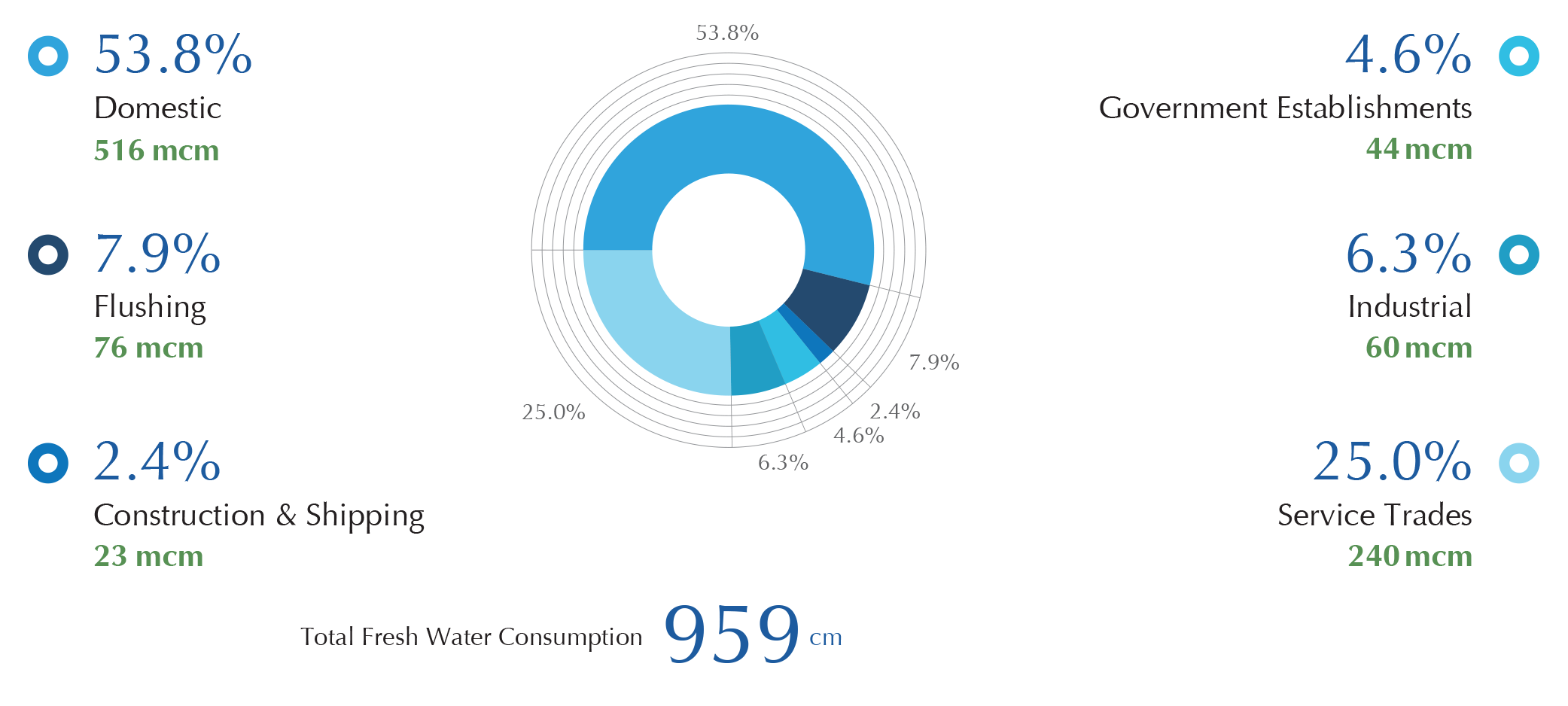
Annual Fresh Water Consumption (by sectors) 2010-2014
million cubic metres (mcm)
| Year | 2010 | 2011 | 2012 | 2013 | 2014 |
|---|---|---|---|---|---|
| Domestic | 509 | 498 | 505 | 504 | 516 |
| Industrial | 57 | 58 | 59 | 58 | 60 |
| Service Trades | 237 | 236 | 236 | 234 | 240 |
| Government Establishments | 42 | 41 | 41 | 41 | 44 |
| Construction & Shipping | 12 | 14 | 18 | 20 | 23 |
| Flushing | 79 | 76 | 76 | 76 | 76 |
| Total Fresh Water Consumption | 936 | 923 | 935 | 933 | 959 |
No. of Water Samples Taken
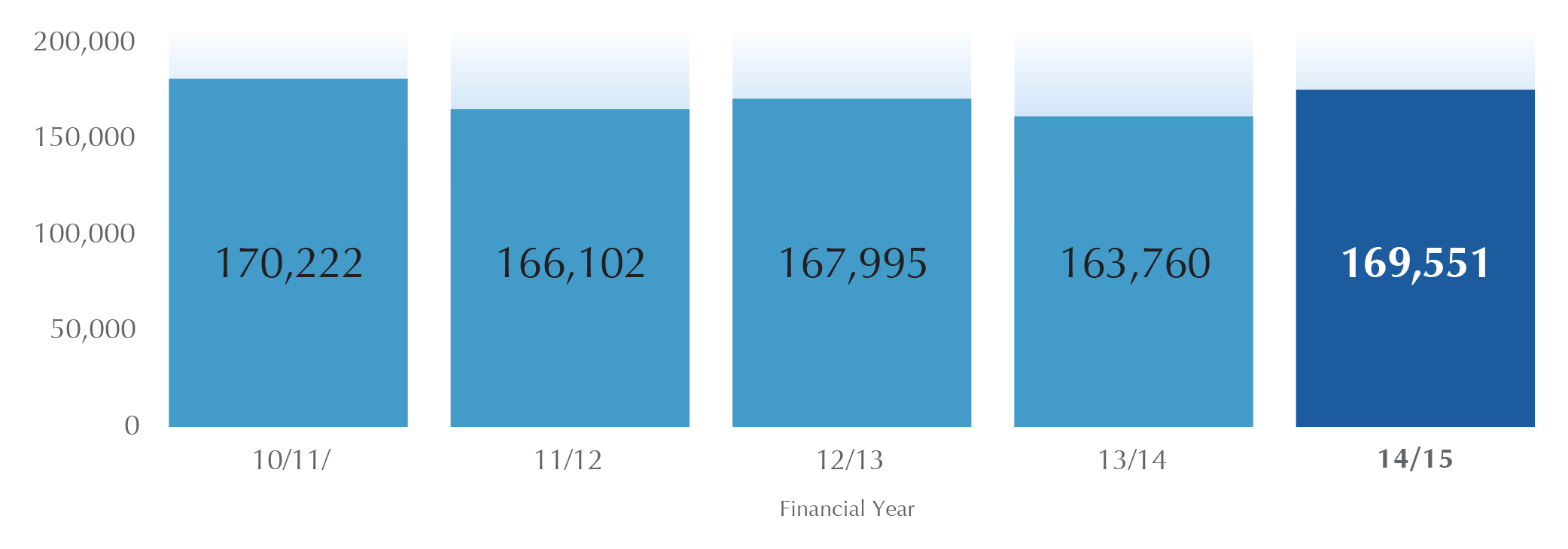
Average Ammoniacal Nitrogen and Manganese Levels in Dongjiang Water
